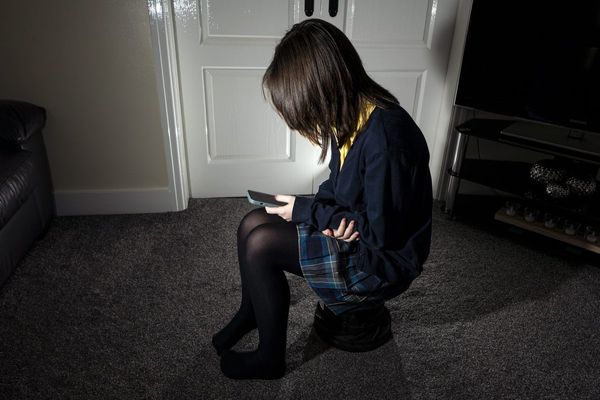
A simple mobile phone app has been developed by Ukrainian volunteers to allow civilians to report sightings of incoming Russian drones and missiles – and, it is hoped, increase the proportion shot down before they hit the ground.
The app, ePPO, relies on a phone’s GPS and compass, and a user only has to point their device in the direction of the incoming object and press a single button for it to send a location report to the country’s military.
Gennady Suldin, one of those behind the project, said the aim was to enlist “the entire population” in helping to spot incoming attacks in what he described as an example of “web-centric war”.
Ukraine has been subject to months of deadly long-range missile strikes, but the attacks have stepped up in the past month as Russia has fired hundreds of cheap, Iranian-made Shahed-136 drones into cities and at Ukraine’s infrastructure.
Limitations in Ukraine’s air defences have meant that a minority of the distinctive delta-winged drones get through. Five civilians were killed when the centre of Kyiv was bombed a fortnight ago; on that day 28 drones were launched at the capital, five exploding near the main train station.
Shahed-136 drones are a challenge for traditional radar to detect because their initial flight path is often low, perhaps 30m above ground, and their small size means they have a modest detection signature. As they close in on their targets, their altitude increases before they dive into the ground with terrifying effect.
The drones have been particularly effective in bombing Ukraine’s power stations and energy grid, causing blackouts in Kyiv and elsewhere, and prompting a scramble by politicians and the military to find ways to halt them.
Typically, the drones are set on course to fly over remote areas, rivers or other bodies of water, and are often launched at night. The attacks on Kyiv were launched from neighbouring Belarus, with drones flying low over the Dnipro river reservoir that runs from the border to the north of the capital.

However, the team behind the app believes the drones’ relatively slow cruising speed, around 110mph, and their distinctive motorbike or lawnmower engine noise means they are easy to detect from the ground. “It is their Achilles heel,” Suldin said. “Once detected, these low-flying objects are easy to intercept.”
Samuel Bendett, a drones expert and adviser to the US CNA military thinktank, agreed that the Shahed drones were “relatively loud and have a distinct sound in flight”, and that the app could be useful as part of Ukraine’s layers of defence. “Every bit of data can help to pinpoint the origin and trajectory of the attack,” he said.
For all the technological novelty, however, the app echoes previous systems of public air defence. During the Battle of Britain, the Royal Observer Corps, a network of volunteer spotters, worked closely with the Royal Air Force to identify German aircraft flying over the UK.
The British coastal radar system faced outwards, meaning that the 30,000-strong network of spotters was crucial in pinpointing the enemy inland.
Towards the end of the war, the focus shifted to the identification of incoming V1 and V2 German rockets.
So far the app has had limited publicity in Ukraine but has nonetheless been downloaded 180,000 times via word of mouth. Its developers acknowledge that it took five months of testing and work with the military and government officials to develop it.
Suldin said the app had already helped to spot previously undetected Shahed drones and Kalibr cruise missiles on a few occasions, but he said he could not provide an exact figure for security reasons. Senior air defence officers “did not expect it to be so efficient”, the app’s promotor said.
For security reasons, the ePPO app only works in conjunction with the established Diia government app, which allows adult Ukrainians to store their identity card, driving licence and other official documents on their phone. That means it cannot, in theory, be used by non-citizens.
The app has been available for around three weeks, although only on Google Android phones, while approval from Apple is expected within days. Setting it up takes only a couple of minutes, requiring a download and confirmation from Diia, with a finger or thumbprint.
Andrii Kosiak, an electronics supplier also involved in the development programme, said he hoped people who work in remote locations – “fishermen, railway workers” – would download the app, although it is not clear that rural populations use Diia, which has been taken up by around a third of the adult population.
Ukraine does not have the equipment to monitor its low-level airspace continuously, said Justin Bronk, an aviation analyst with the Rusi thinktank. “Updates from spotters,” he said, would “help the air defence network plot the course of missile and loitering munition raids, to alert air defence units along their course and tailor air raid warnings.”







